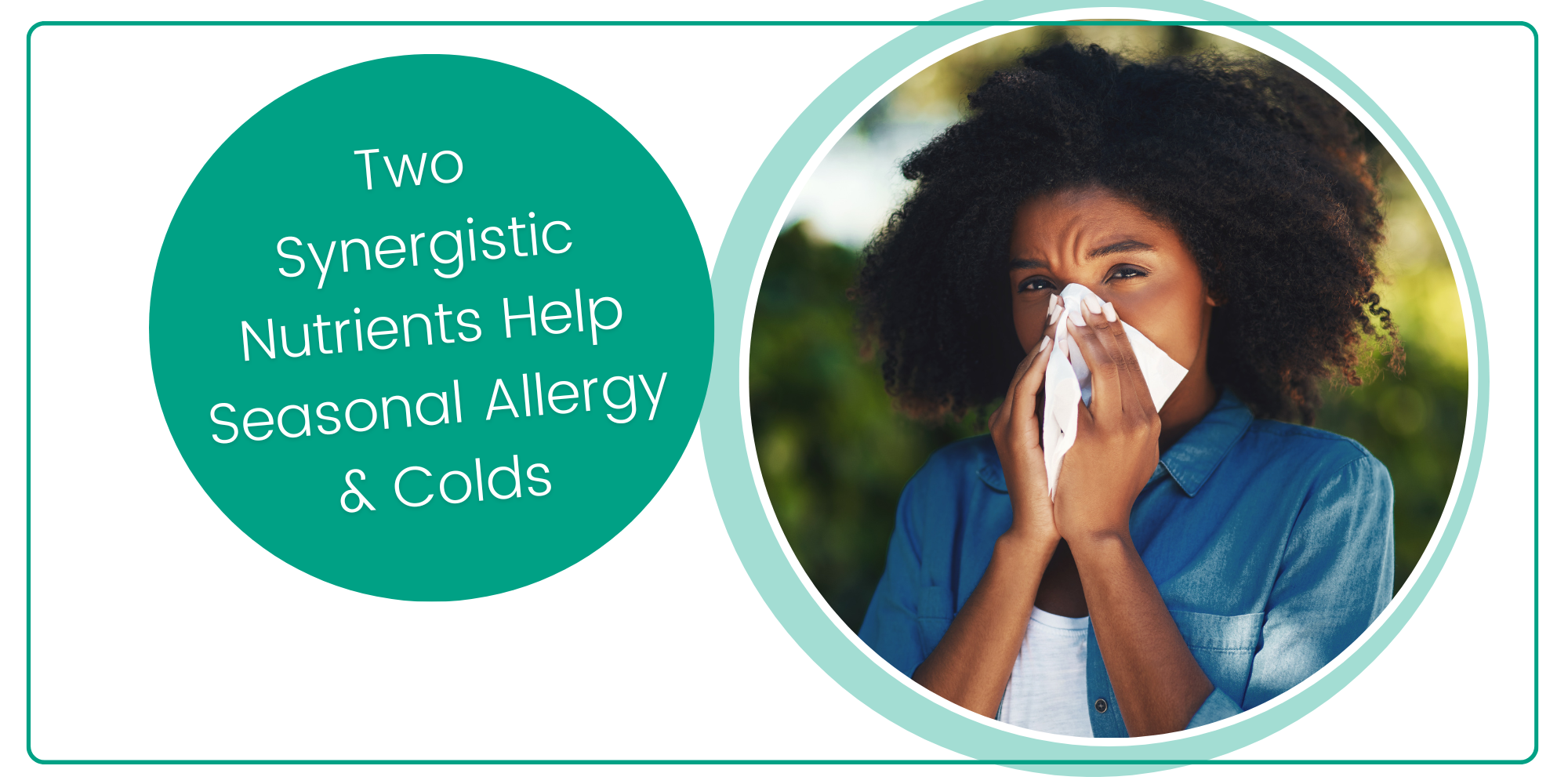
It’s that time of year again. Many of us are coughing, sneezing and generally not feeling our best. Whether due to seasonal pollen or something else, there are two nutrients that should be part of your first line of defense against allergies and viral risk: polyphenols and ascorbate (Vitamin C).
Polyphenols (flavonols and flavonoids) are a group of more than 8,000 chemical compounds found in plants that provide much of the flavor, color, and taste to fruits, vegetables, herbs, nuts, seeds, and sprouts. These compounds are best known for their antioxidant and anti-inflammatory health benefits as well as support of the cardiovascular and nervous systems.
One of the best-studied polyphenols is the flavonoid quercetin, naturally occurring in onions, kale, apples, dark berries, grapes, broccoli, tea, dill, and many other herbs, vegetables, and fruits. In addition to its antioxidant and anti-inflammatory benefits, quercetin is particularly useful during the spring because of its significant antihistaminic, i.e.,anti-allergy, effects. Quercetin prevents activation and recruitment of mast cells while stabilizing their membranes and blocking subsequent degranulation – which is very important for managing Type 1, or immediate, allergies.
Separately, quercetin has been shown to have direct antiviral activity. It appears to block virus entry into cells and inhibit viral replication in in vitro studies, and is suggested as a supplemental agent for both prevention and treatment of viral illness.
All quercetins, however, are not alike. Poor bioavailability or toxicity make many forms inappropriate for health management. Quercetin “dihydrate” is the preferred form to use. In physiologic or biological salt solutions as present in cells and tissues, it is easily bioavailable, especially to the immune first responder cells. Flavonols like oligomeric proanthocyanidins (OPC) can work hand in hand with quercetin dihydrate to enhance antioxidant benefit.
Ascorbate (vitamin C). Ascorbate acts as an antioxidant and anti-inflammatory agent and has also been shown to have antihistaminic effects. This antihistamine action is different from that of traditional antihistamines which block histamine receptors; ascorbate instead reduces the amount of histamine you produce. This can potentially diminish the allergic response.
Ascorbate is also well-known as a “cold-buster.” Many of us reach for the vitamin C when we feel a cold coming on. It has been shown to directly boost immune response and to produce interferons which interfere with viral replication.
Quercetin and Ascorbate Together – A Synergy
Quercetin and ascorbate together are thought to have a synergistic antiviral effect due to their overlapping effects on the immune system and the viruses themselves. Ascorbate can also recycle quercetin, and quercetin dihydrate preserves the integrity of ascorbate by enhancing the reduction of the intermediary compound dehydroascorbic acid (oxidized ascorbate) back to fully reduced ascorbate, prolonging the action of vitamin C.
Note About Allergies
The coughing and sneezing mentioned above are a result of IgE-mediated reactions. The triggers of these type I immediate allergies are usually easy to identify because reactions occur soon after exposure (usually within a few minutes to 3 hours).
Identifying a trigger to which you were exposed up to three weeks ago is much more challenging, but equally important. Only by identifying these delayed hypersensitivities and avoiding the offending substances, are you able to restore immune resilience and optimal protection.
Learn more about the specialized tests to identify these delayed (type II, III, IV hypersensitivity) allergies.
